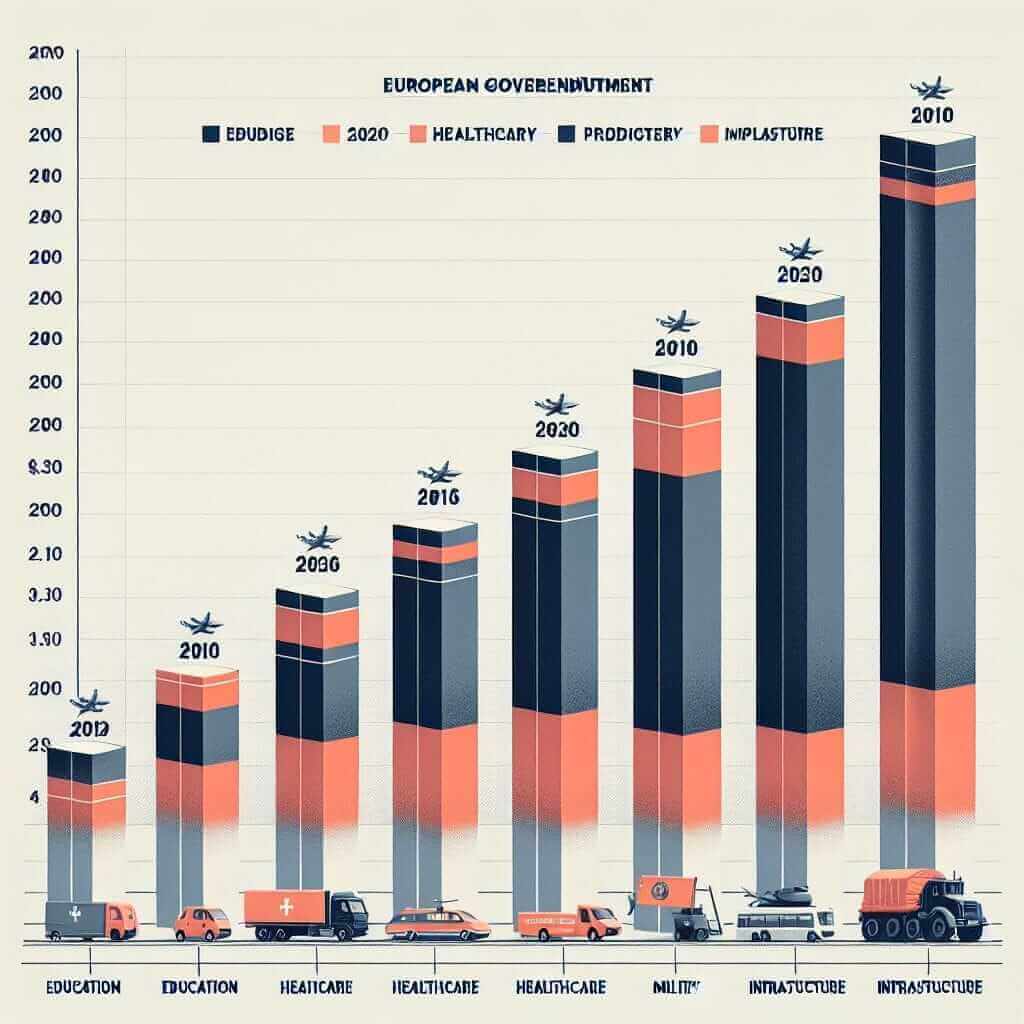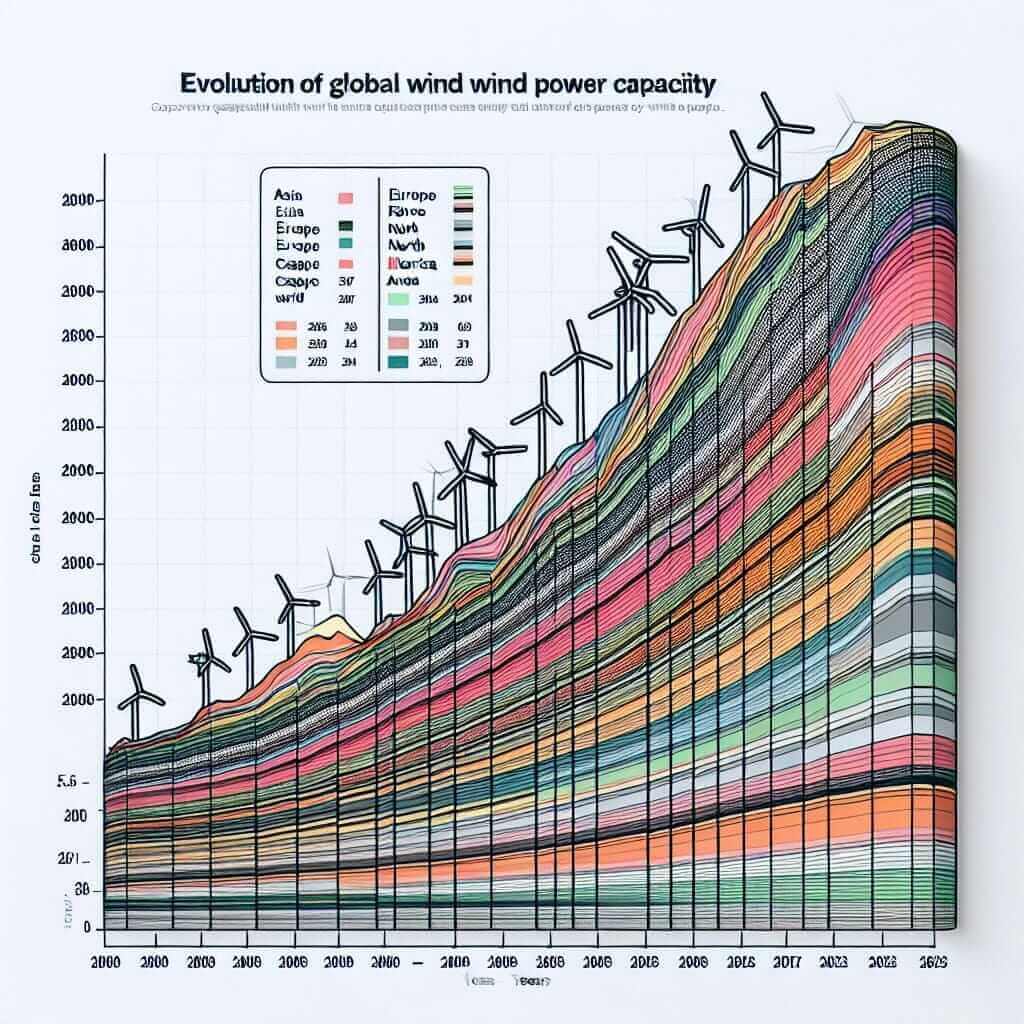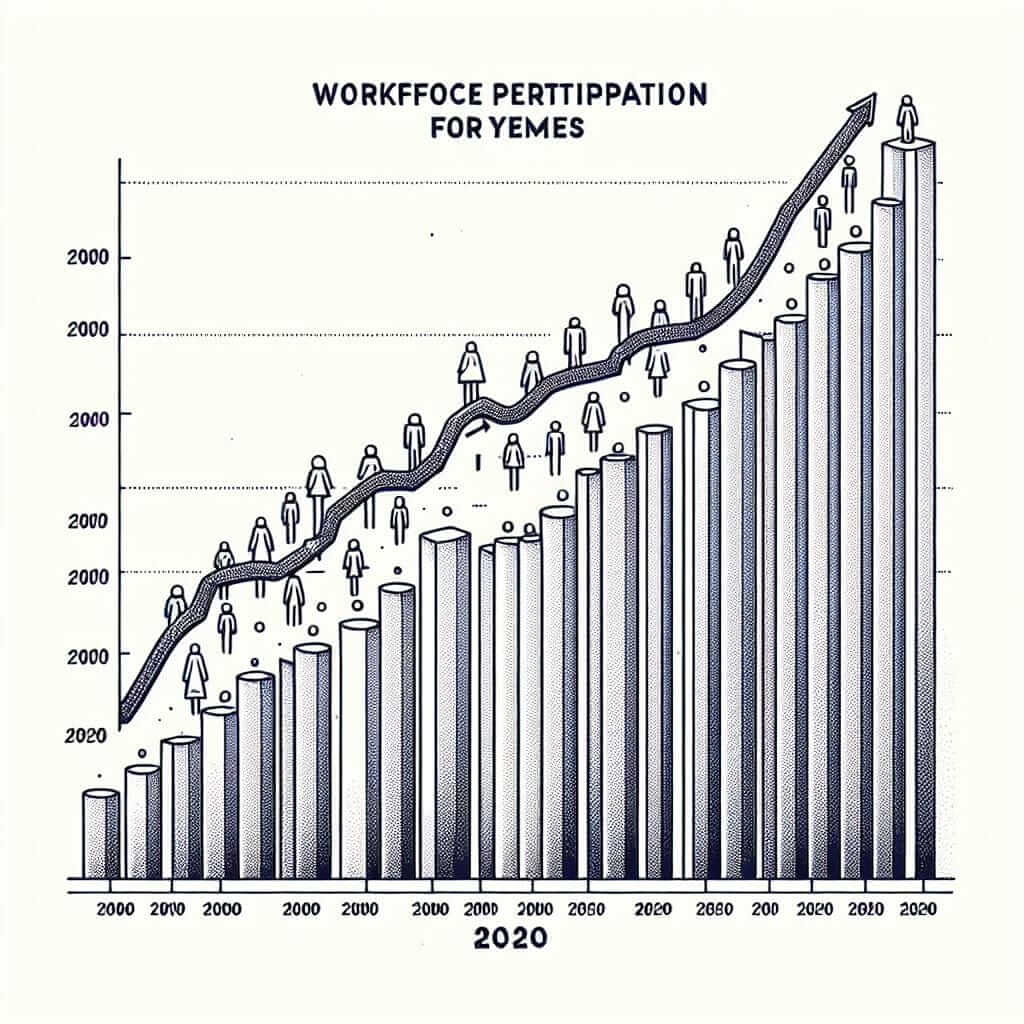Government spending is a recurring theme in the IELTS Writing Task 1, particularly when it comes to analyzing data presented in charts, tables, or graphs. Understanding how to effectively interpret and articulate these figures is crucial for achieving a high band score.
This article delves into the intricacies of describing government expenditure on education, healthcare, military, and infrastructure, equipping you with the necessary skills and vocabulary to excel in this area. We will analyze real-world data, dissect common IELTS prompts, and provide a model answer to guide your writing practice.
Sample IELTS Writing Task 1 Question
The chart below shows government spending on different sectors in a European country between 2010 and 2020.
Summarise the information by selecting and reporting the main features, and make comparisons where relevant.
 Government Spending by Sector
Government Spending by Sector
Data Analysis
Before we delve into writing, let’s analyze the provided chart (which you will create and insert). Pay close attention to:
- Trends: Are there any noticeable increases or decreases in spending over the period?
- Comparisons: How does spending in each sector compare to others? Are there significant differences?
- Key Features: Identify the most noteworthy information that needs to be highlighted.
Model Answer
The bar chart illustrates the expenditure of a European nation on four key sectors, namely education, healthcare, military, and infrastructure, spanning a decade from 2010 to 2020.
Overall, healthcare consistently received the largest share of the budget throughout the period. Conversely, military spending remained the lowest, although it exhibited a moderate increase in the later years.
In 2010, healthcare expenditure stood at approximately 45 billion euros, dwarfing the allocation for education, which received around 25 billion euros. Infrastructure followed closely at 20 billion euros, while military spending was significantly lower at 10 billion euros.
Over the next ten years, healthcare spending demonstrated a steady upward trend, reaching a peak of 60 billion euros in 2020. Similarly, expenditure on education rose gradually to 35 billion euros by the end of the decade.
Interestingly, while infrastructure spending fluctuated slightly between 2010 and 2015, it experienced a significant surge in the latter half of the period, reaching 30 billion euros in 2020. This suggests a renewed focus on infrastructural development in recent years. Meanwhile, military expenditure showed a gradual increase, culminating in an allocation of approximately 15 billion euros in 2020.
Word Count: 175
Writing Tips:
- Paraphrase: Rephrase the question prompt in your introduction to demonstrate your vocabulary range.
- Overview: Provide a general overview of the main trends and comparisons before delving into specifics.
- Data Selection: Focus on the most significant data points. Don’t feel the need to report every single figure.
- Comparisons: Use comparative language (e.g., higher than, lower than, in contrast to) to highlight differences.
- Tenses: Use the appropriate tenses to describe past, present, and future trends.
- Vocabulary: Utilize a variety of vocabulary related to trends, changes, and comparisons.
Key Vocabulary
- Expenditure (n.) /ɪkˈspendɪtʃər/: The action of spending funds.
- Allocation (n.) /ˌæləˈkeɪʃən/: The amount of money, resources, etc. that is given to somebody or something for a particular purpose.
- Dwarfed (v.) /dwɔːrf/: To make something seem small or unimportant compared with something else.
- Fluctuate (v.) /ˈflʌktʃueɪt/: To change frequently in size, amount, quality, etc., especially from one extreme to another.
- Surge (n.) /sɜːrdʒ/: A sudden and great increase.
Conclusion
Successfully tackling an IELTS Writing Task 1 question about government spending requires a keen eye for data analysis, a clear understanding of trends, and the ability to express your observations in a concise and coherent manner. By following the tips outlined in this article and practicing with real data sets, you can confidently approach this type of question and aim for a band score of 7 or higher. Remember, practice makes perfect!


